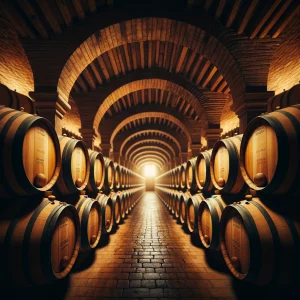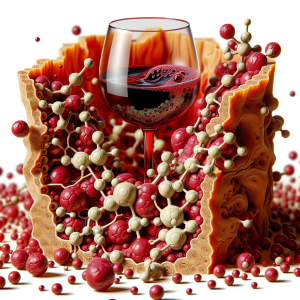As their name indicates, sweet wines are those that mainly gather products made with the sweetest grapes and an interrupted fermentation process to preserve the natural sugars in greater quantity. In fact, to be considered sweet wines, they must contain an amount of residual sugar greater than 45 grams per liter. In this post we show you the definitive guide to this type of wine, here we go!
Sweet wines: what they are and how they are made
Spain is a country with excellent climatic conditions, and this allows the grapes to have enough sugar to give an adequate alcohol content.
As mentioned above, for a wine to be considered sweet, it must contain a minimum of 45 grams of sugar per liter. In Spain, thanks to these conditions, the sugar content of wines ranges between 100 and 200 grams per liter. This amount is achieved with what is called “asoleo”, which consists of letting the bunches of grapes rest on any surface where there is sun to dry, thus concentrating their natural sugars.
Wines made using this method are known as naturally sweet wines (VND) and are late harvest wines, made without the addition of alcohol, simply from the fermentation of must from extraordinarily ripe grapes. The high concentration of sugars in the berries ends up saturating the activity of the yeasts, which cease to act, leaving a considerable amount of residual sugar in the wine.
However, there is another way of making sweet wines. In this case, we are talking about natural sweet wines (VDN), whose fermentation has stopped with the addition of wine alcohol, thus leaving a quantity of residual sugar. Their alcoholic strength combines a part of added alcohol with another part of alcohol acquired during fermentation.
Types of sweet wines

Did you know that there are several types of sweet wine? Although most of them are made from white grapes, there are also other varieties.
Here are the main types of sweet wine according to their grape:
White grapes
- Pedro Ximénez: Pedro Ximénez is one of the best known grapes in Spain. This white grape, characteristic of Andalusian sweet wines, gives rise to very sweet wines with abundant notes of raisined grapes. Its elaboration is produced by picking the grapes in perfect condition in the vineyard to sun the grapes in esparteras, achieving a high sugar concentration and a different and pleasant aroma.
- Moscatel: Moscatel is considered one of the oldest grapes. It is characterized for being a very aromatic and sweet grape, one of the few that can be used to make wine and also as a table grape. It is very traditional in coastal areas of Andalusia such as Malaga and Jerez, although it is also found in Alicante, Valencia and Navarra.
- Malvasia: Malvasia is a white grape variety grown in the Canary Islands, which is used to make sweet aromatic wines. Sweet wines from Catalonia are also made from Malvasia. It is a less aromatic variety than Moscatel, but it is also very rich in sugars and withstands high temperatures well.
Other grapes
- Monastrell: In Murcia and Alicante these sweet wines are made with red grapes of the Monastrell variety. For this purpose, overripe grapes are usually used to increase the sugar content. A variant of the sweet red wines made with Monastrell are the Fondillones made in Alicante.
- Mistelas: These are another sweet product derived from grapes, but they are not really wines, as they have not undergone the fermentation process: they are the result of mixing grape must with wine alcohol. They are traditional in certain areas of the Mediterranean basin.
- Garnacha: in Catalan appellations such as Priorat, Montsant and Terra Alta, a singular garnacha is produced.
The 4 best sweet wines according to grape type
What better way to end this post with our recommendations of sweet wines according to the type of grape. Here is our selection!
# Ochoa moscatel cosecha tardía: Navarra
This sweet wine is a favorite in terms of value. It has been made with Moscatel à Petit Grains since 1994, initially it was a natural sweet wine; from the 2011 vintage the style has changed, now it is fortified, gaining density and weight.
# Noe px gonzález byass: Jerez wine
This wine is made with Pedro Ximénez fruit from the Viña Esteve estate, located in Jerez Superior. It stands out in a special way, as it recently received the gold medal as best sweet wine in the classification of the Brussels World Wine Competition.
# Suertes del marqués listán blanco malvasía: Valle de la orotava (Canary Islands)
Limited edition wine that comes from the Malvasia grape was harvested in 2011 and comes from a plot where the vines were uprooted some time later. It is really surprising and its moderate sweetness will make it very versatile to accompany food.
# El sequé monastrell dulce: Alicante
A great favorite, even if it can be considered quite atypical. The nose is dominated by candied red fruits, but the most characteristic aromas seem to explore the balsamic dimension of Monastrell (pines, resin, nettle and other herbs). A powerful, intense wine with moderate sweetness.








